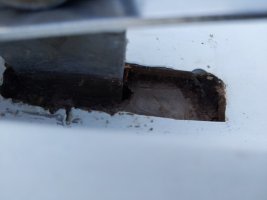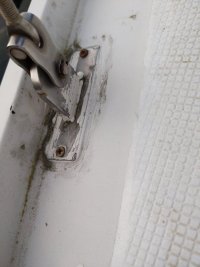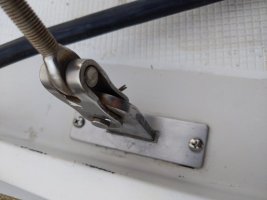I'm rebedding my chainplates after noticing some water intrusion, and was surprised to find that the top layer of the deck has a pretty large cutout around the chainplate itself. There was also some bondo-like filler surrounding it where the core should be, but it was weak and loose so I dug it out along with the surrounding soft core.

Does anyone know how best to fill this void beneath the chainplate cover? Planning to use through bolts and butyl tape to seal the cover, but need something solid in there for it to seal against. I was thinking perhaps epoxy with a filler to thicken it and add strength, or something like West System Six 10.
Thanks for your help!

Does anyone know how best to fill this void beneath the chainplate cover? Planning to use through bolts and butyl tape to seal the cover, but need something solid in there for it to seal against. I was thinking perhaps epoxy with a filler to thicken it and add strength, or something like West System Six 10.
Thanks for your help!
Last edited:


